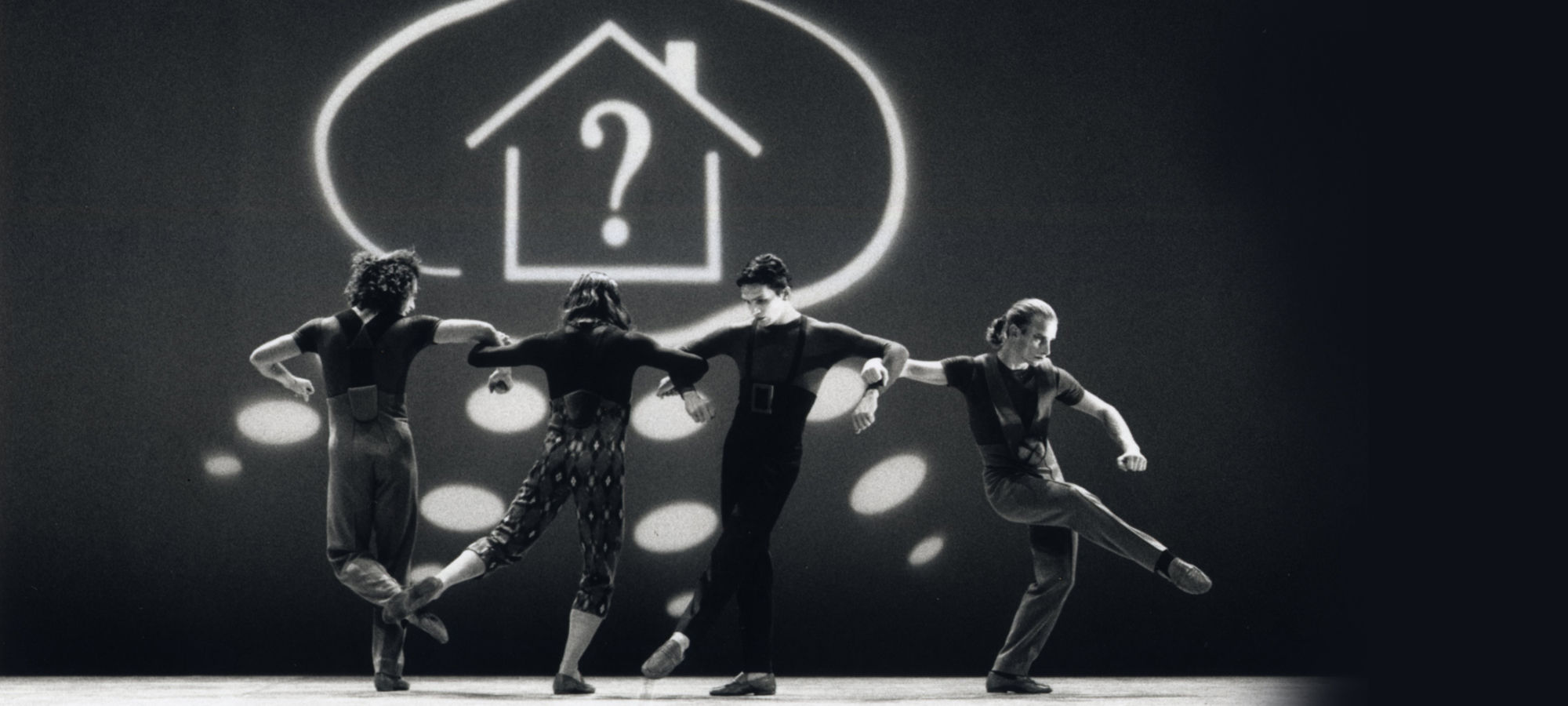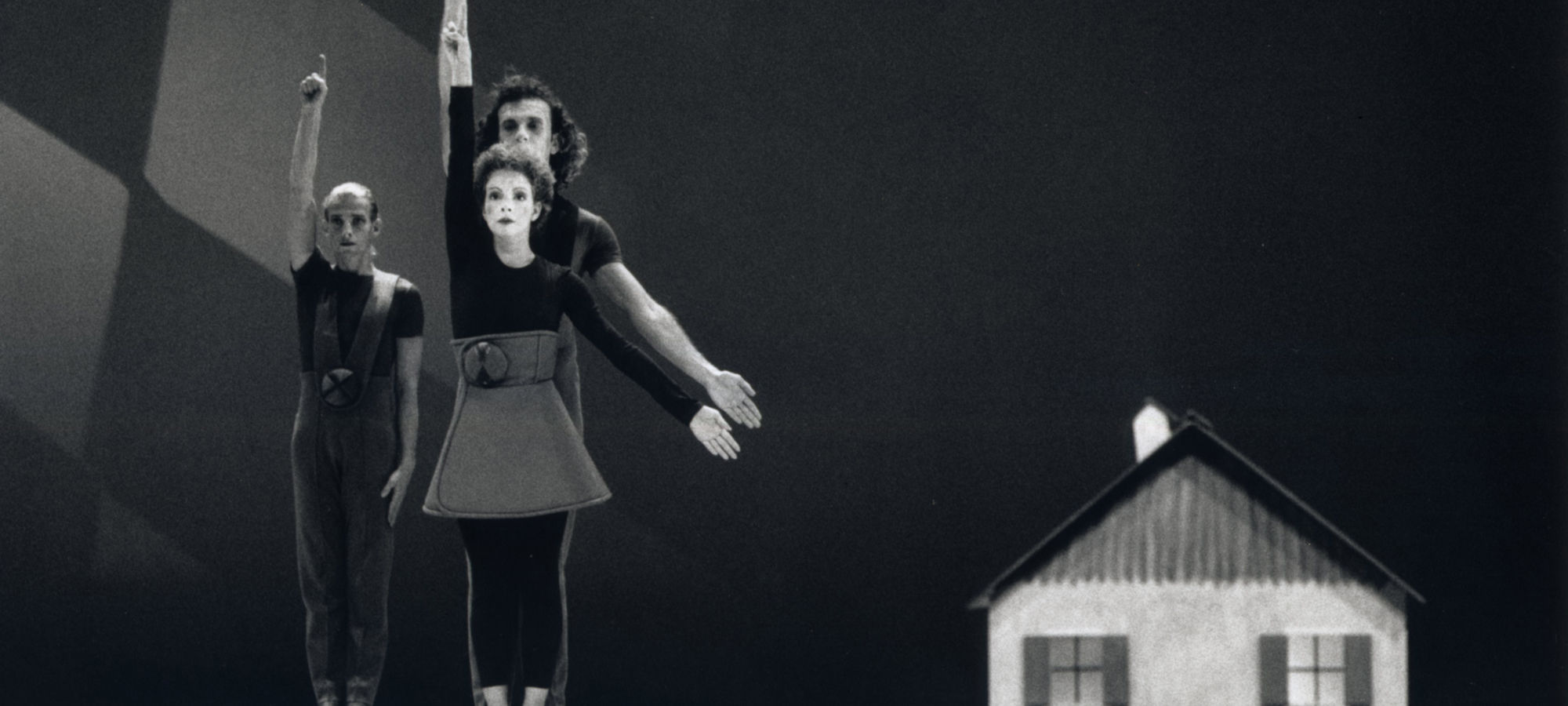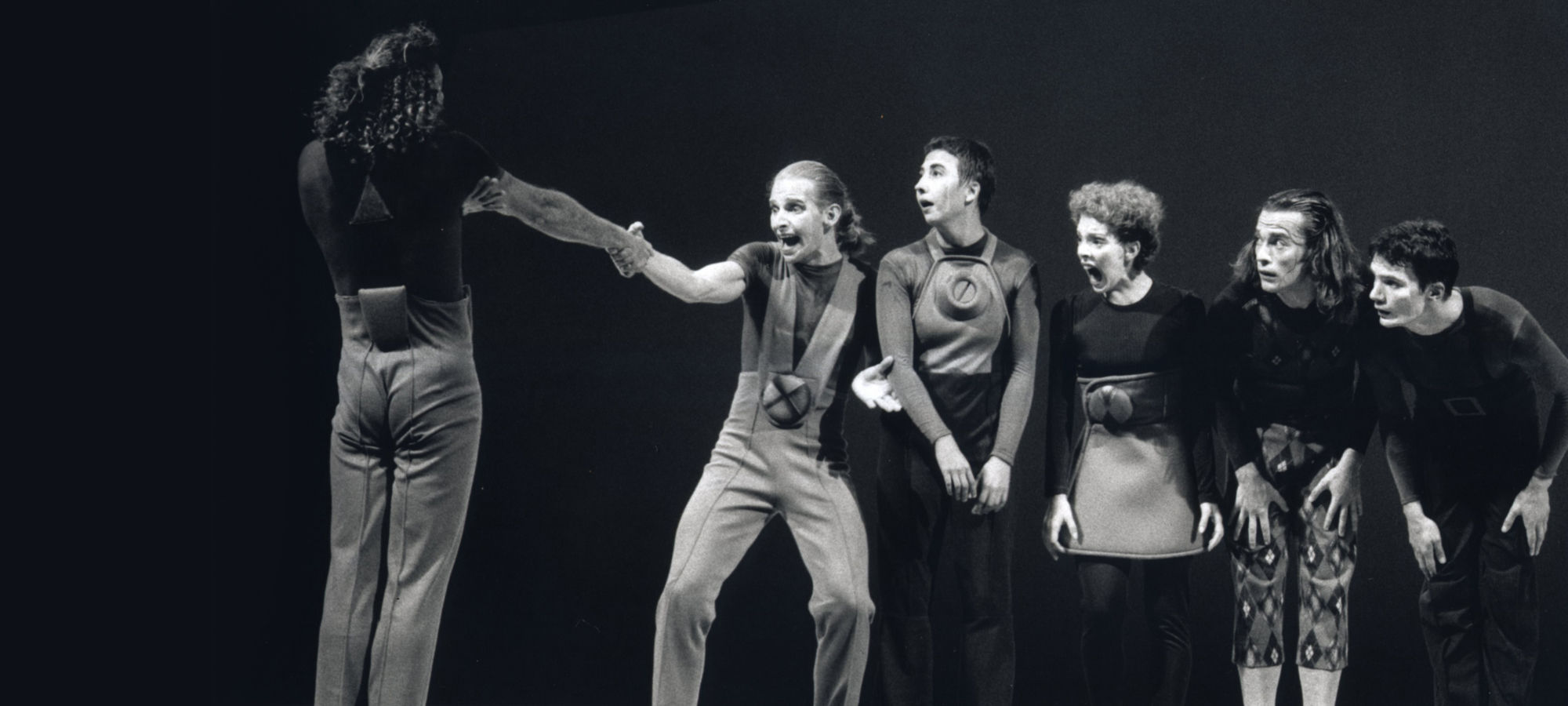
1997 MK 13
The variant of normal. The work depicts a dance rehearsal in the final minutes before the artists appear before the public, and evokes at times the choreographer’s frequent oscillations between what will be his inspiration on the one hand and his daily practice on the other. The variant of normal is a strong affirmation about how the creative person must work daily to achieve his goals and not just in his imagination as can be assumed poetically. The work avoids laborious obsession.
1997 MK 13 the question, recurring over the years, of the vanity of art, particularly in light of society’s miseries, is the subject of this dance that makes fun of itself. 6 dancer-clowns with frozen smiles exert themselves to prolong the suspense, anxious to escape what should happen. The animated relationships of these modern heroes inspire sequences where one is moved by simple things, and not the barbaric acts they suggest: 1997 MK 13 is not a cynical eye focused on the violence in this world but rather an acknowledgement of the carapaces we all create to avoid suffering.
Radically sequenced by brief orchestral moments borrowed from the Polish composer, Wojciech Kilar, known for his film scores, the dance produces words and other sounds that resemble at times cartoons, or a silent film with sound added.
Echos
Le Figaro René Sirvi
18 Jul.1997
Humor and abstraction
The first work simulates a very casual rehearsal, where one of the dancers plays the part of the choreographer. He addresses the other 4 dancers by their first names. But the work is not as simple as that. The 5 performers leave the stage every time another dancer appears who then performs a remarkable solo on the famous Bachianas by Villa-Lobos. Even if sometimes a bit stern, the work doesn’t lack a seductive quality in certain very pure and simple movements.
The 2nd part aims to be more humorous. The gags are funny, like the mime scenes where 4 dancers pass back and forth a glass of water or a firecracker about to explode. There is also a very successful face-to-face dance scene that creates a disturbing mirror effect. The music is superb and the dancers are precise and rigorous.
Saisons de la danse Bernard Raffali
dec.1997
The first part, the variant of normal, is a nice piece, a murmuring work where dance looks at itself in the mirror and sees all its uncertainties and tensions. Troubled momentum heads towards a true figure, like a succession of approaches to the desired perfection, all the while seeking unexpected equilibrium, which is broken as soon as it’s attained in breathtakingly light pirouettes.
The 2nd part, 1997 MK 13, pursues humor by following in the footsteps of Tom and Jerry from the cartoons rather than from the comic books : who chases who in this dance where everyone is both a cat and a mouse ? Melancholic and disenchanted humor results by indulging in deliberate awkwardness. Beyond easy certainties, Kelemenis emerges as the choreographer of the quick sketch, more attentive to the emotions of the moment than to the stability of the ensembles, preferring the fleeting line to the color that remains.




